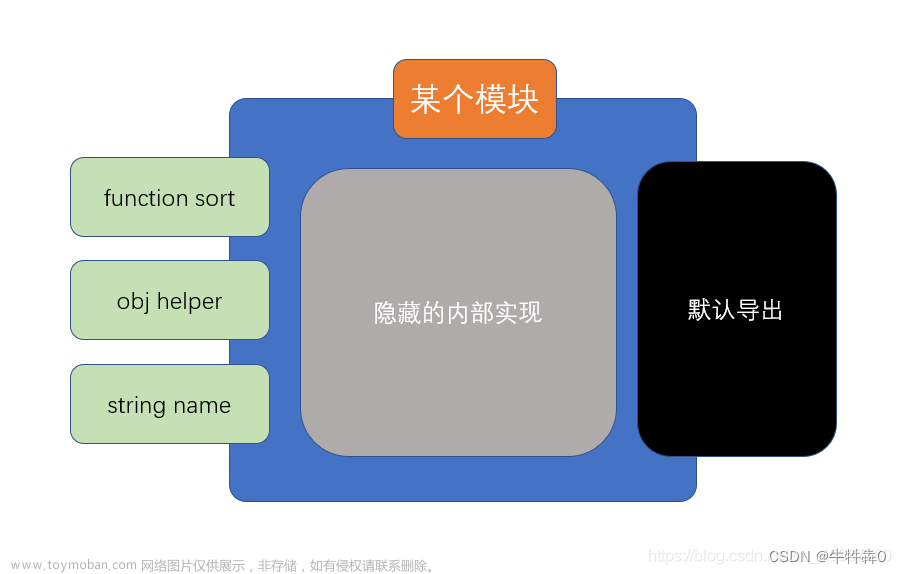模块化驱动启动led,蜂鸣器,风扇,震动马达并加上Makefile
封装模块化驱动,可自由安装卸载驱动,便于驱动更新(附图)
1.安装模块驱动同时初始化各个设备并使能
2.该驱动会自动创建驱动节点.
3.通过c函数程序输入控制各个设备
4.卸载模块驱动
//编译驱动(注意Makefile的编译到移植到开发板的内核)
make arch=arm
//安装驱动
insmod mycdev.ko
//卸载驱动
rmmod mycdev
//编译fun.c 函数(用到交叉工具编译)
arm-linux-gnueabihf-gcc fun.c
head.h //头文件
#ifndef __HEAD_H__
#define __HEAD_H__
typedef struct{
unsigned int MODER;
unsigned int OTYPER;
unsigned int OSPEEDR;
unsigned int PUPDR;
unsigned int IDR;
unsigned int ODR;
}gpio_t;
#define PHY_LED1_ADDR 0X50006000 //GPIOE 10
#define PHY_LED2_ADDR 0X50007000 //GPIOF 10
#define PHY_LED3_ADDR 0X50006000 //GPIOE 8
#define PHY_RCC_ADDR 0X50000A28 //RCC
#define PHY_FAN_ADDR 0X50006000 //GPIOE 9 TIM1 风扇
#define PHY_ATO_ADDR 0X50007000 //GPIOF 6 TIM16 震动马达
#define PHY_WMM_ADDR 0X50003000 //GPIOB 6 TIM4 蜂鸣器
//功能码
#define LED_ON _IOW('1',1,int)
#define LED_OFF _IOW('1',0,int)
#endif // MACRO
mycmod.c //驱动函数
#include <linux/init.h>
#include <linux/module.h>
#include <linux/fs.h>
#include <linux/io.h>
#include <linux/device.h>
#include "head.h"
unsigned int major;
char kbuf[128] = {0};
gpio_t *vir_led1;
gpio_t *vir_led2;
gpio_t *vir_led3;
gpio_t *vir_wmm;
gpio_t *vir_fan;
gpio_t *vir_ato;
unsigned int *vir_rcc;
struct class *cls;
struct device *dev;
int mycdev_open(struct inode *inode,struct file *file)
{
printk("%s:%s:%d\n",__FILE__,__func__,__LINE__);
return 0;
}
long mycdev_ioctl(struct file *file,unsigned int cmd,unsigned long arg)
{
int which;
copy_from_user(&which,(void *)arg,4);
switch (cmd)
{
case LED_ON:
switch (which)
{
case 1: // LED1
vir_led1->ODR |= (0x1 << 10); // LED1开灯
break;
case 2: // LED2
vir_led2->ODR |= (0x1 << 10); // LED2开灯
break;
case 3: // LED3
vir_led3->ODR |= (0x1 << 8); // LED3开灯
break;
case 4: // FAN
vir_fan->ODR |= (0x1 << 9); // FAN开灯
break;
case 5: // ATO
vir_ato->ODR |= (0x1 << 6); // ATO开灯
break;
case 6: // WMM
vir_wmm->ODR |= (0x1 << 6); // WMM开灯
break;
}
break;
case LED_OFF:
switch (which)
{
case 1:
vir_led1->ODR &= (~(0X1 << 10));
break;
case 2:
vir_led2->ODR &= (~(0X1 << 10));
break;
case 3:
vir_led3->ODR &= (~(0X1 << 8));
break;
case 4:
vir_fan->ODR &= (~(0X1 << 9));
break;
case 5:
vir_ato->ODR &= (~(0X1 << 6));
break;
case 6:
vir_wmm->ODR &= (~(0X1 << 6));
break;
default:
return -1;
}
default:
return -1;
}
return 0;
}
int mycdev_close(struct inode *inode,struct file *file)
{
printk("%s:%s:%d\n",__FILE__,__func__,__LINE__);
return 0;
}
//定义操作方法结构体变量并赋值
struct file_operations fops={
.open = mycdev_open,
.release = mycdev_close,
.unlocked_ioctl = mycdev_ioctl,
};
int all_led_init(void)
{
// 寄存器地址的映射
vir_led1 = ioremap(PHY_LED1_ADDR, sizeof(gpio_t));
if (vir_led1 == NULL)
{
printk("ioremap filed:%d\n", __LINE__);
return -ENOMEM;
}
vir_led2 = ioremap(PHY_LED2_ADDR, sizeof(gpio_t));
if (vir_led2 == NULL)
{
printk("ioremap filed:%d\n", __LINE__);
return -ENOMEM;
}
vir_led3 = vir_led1;
vir_fan = vir_led1;
vir_ato = vir_led2;
vir_wmm = ioremap(PHY_WMM_ADDR, sizeof(gpio_t));
if (vir_wmm == NULL)
{
printk("ioremap filed:%d\n", __LINE__);
return -ENOMEM;
}
vir_rcc = ioremap(PHY_RCC_ADDR, 4);
if (vir_rcc == NULL)
{
printk("ioremap filed:%d\n", __LINE__);
return -ENOMEM;
}
printk("物理地址映射成功\n");
// 寄存器的初始化
// rcc
(*vir_rcc) |= (3 << 4);
(*vir_rcc) |= (1 << 1);
// led1
vir_led1->MODER &= (~(3 << 20));
vir_led1->MODER |= (1 << 20);
vir_led1->ODR &= (~(1 << 10));
// led2
vir_led2->MODER &= (~(3 << 20));
vir_led2->MODER |= (1 << 20);
vir_led2->ODR &= (~(1 << 10));
// led3
vir_led3->MODER &= (~(3 << 16));
vir_led1->MODER |= (1 << 16);
vir_led1->ODR &= (~(1 << 8));
// WMM B 6
vir_wmm->MODER &= (~(3 << 12));
vir_wmm->MODER |= (1 << 12);
vir_wmm->ODR &= (~(1 << 6));
// FAM E 9
vir_fan->MODER &= (~(3 << 18));
vir_fan->MODER |= (1 << 18);
vir_fan->ODR &= (~(1 << 9));
// ATO F 6
vir_ato->MODER &= (~(3 << 12));
vir_ato->MODER |= (1 << 12);
vir_ato->ODR &= (~(1 << 6));
printk("寄存器初始化成功\n");
return 0;
}
static int __init mycdev_init(void)
{
int i;
//字符设备驱动注册
major = register_chrdev(0,"mycdev",&fops);
if(major < 0)
{
printk("注册失败\n");
return major;
}
printk("注册成功major = %d\n",major);
//向上提交目录
cls = class_create(THIS_MODULE,"mycdev");
if(IS_ERR(cls))
{
printk("向上提交目录失败\n");
return -PTR_ERR(cls);
}
printk("向上提交目录信息成功\n");
//向上提交设备节点信息
for(i = 0;i < 3; i++)
{
dev = device_create(cls,NULL,MKDEV(major,i),NULL,"myled%d",i);
if(IS_ERR(dev))
{
printk("向上提交设备节点信息失败\n");
return -PTR_ERR(dev);
}
}
printk("向上提交设备节点信息成功\n");
//寄存器映射以及初始化
all_led_init();
return 0;
}
static void __exit mycdev_exit(void)
{
int i;
//设备初始化
all_led_init();
//取消虚拟映射
iounmap(vir_led1);
iounmap(vir_led2);
iounmap(vir_led3);
iounmap(vir_rcc);
//销毁节点信息
for(i = 0; i < 3; i++)
{
device_destroy(cls,MKDEV(major,i));
}
//销毁目录信息
class_destroy(cls);
//注销字符设备驱动
unregister_chrdev(major,"mycdev");
printk("出口函数\n");
}
module_init(mycdev_init);
module_exit(mycdev_exit);
MODULE_LICENSE("GPL");
fun.c
#include <stdio.h>
#include <unistd.h>
#include <sys/types.h>
#include <sys/stat.h>
#include <fcntl.h>
#include <stdlib.h>
#include <sys/ioctl.h>
#include <string.h>
#include "head.h"
int main(int argc, char const *argv[])
{
/* code */
int a,b;
char buf[128] = {0};
printf("调用open\n");
int fd = open ("/dev/myled0",O_RDWR);
if(fd < 0)
{
printf("打开设备文件失败\n");
exit(-1);
}
while(1)
{
//从终端读取
printf("请输入指令\n");
printf("0(关) 1(开)\n");
printf("请输入>");
scanf("%d",&a);
if(a)
{
printf("打开以下设备\n");
}
else
{
printf("关闭以下设备\n");
}
printf(" 1(LED1) 2(LED2) 3(LED3)\n");
printf(" 4(FAN) 5(ATO) 6(WMM)\n");
printf("请输入要控制的设备:");
scanf("%d",&b);
switch(a)
{
case 1:
ioctl(fd,LED_ON,&b);//开灯
break;
case 0:
ioctl(fd,LED_OFF,&b);
break;
}
}
printf("调用close\n");
close (fd);
return 0;
}
Makefile
modname ?= mycdev
arch ?= arm
ifeq ($(arch),arm)
KERNELDIR:= /home/ubuntu/13_UBOOT/linux-stm32mp-5.10.61-stm32mp-r2-r0/linux-5.10.61
else
KERNELDIR:=/lib/modules/$(shell uname -r)/build/
endif
PWD:=$(shell pwd)
all:
make -C $(KERNELDIR) M=$(PWD) modules
clean:
make -C $(KERNELDIR) M=$(PWD) clean
obj-m:=$(modname).o

文章来源地址https://www.toymoban.com/news/detail-604133.html文章来源:https://www.toymoban.com/news/detail-604133.html
到了这里,关于驱动开发 day3 (模块化驱动启动led,蜂鸣器,风扇,震动马达)的文章就介绍完了。如果您还想了解更多内容,请在右上角搜索TOY模板网以前的文章或继续浏览下面的相关文章,希望大家以后多多支持TOY模板网!











